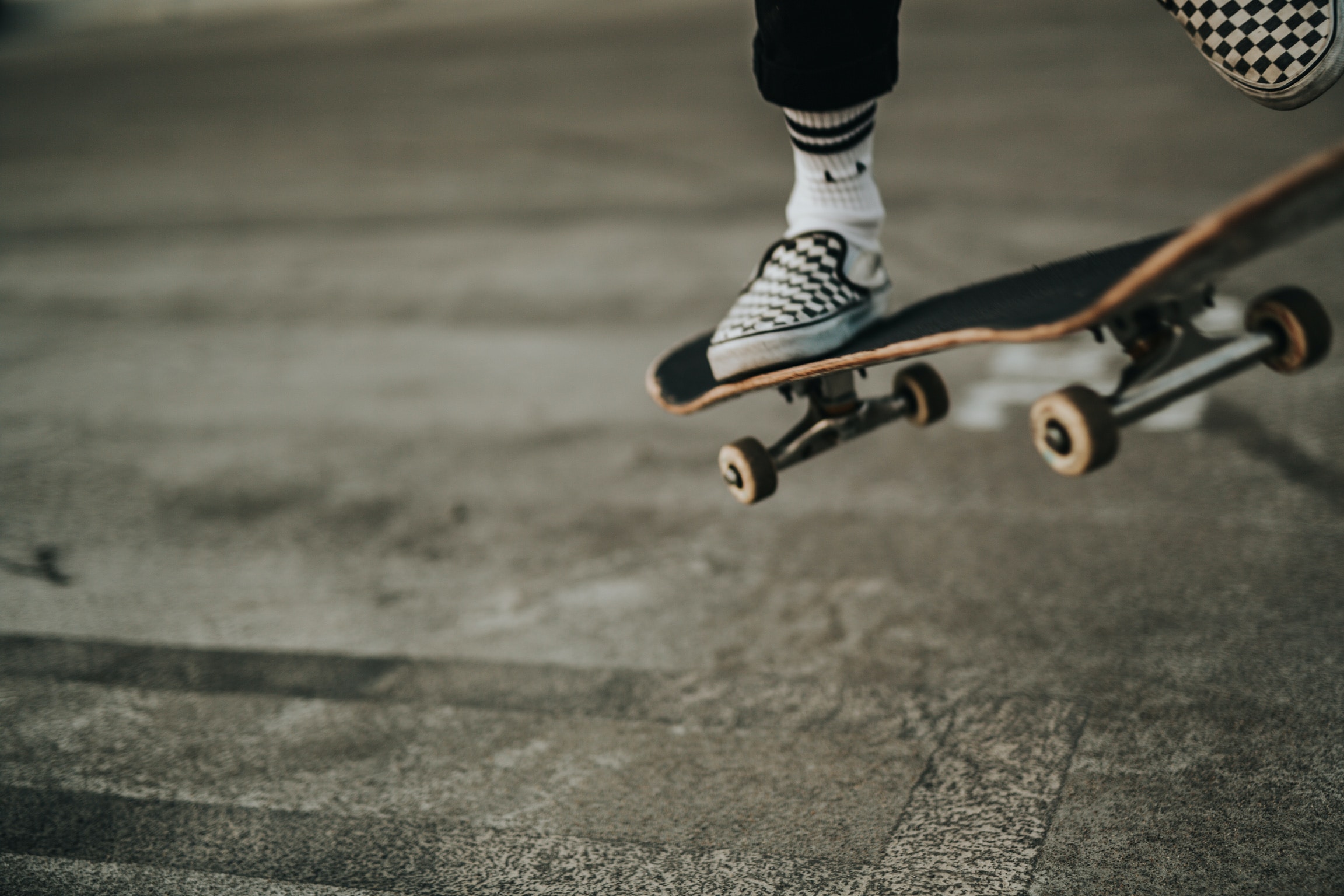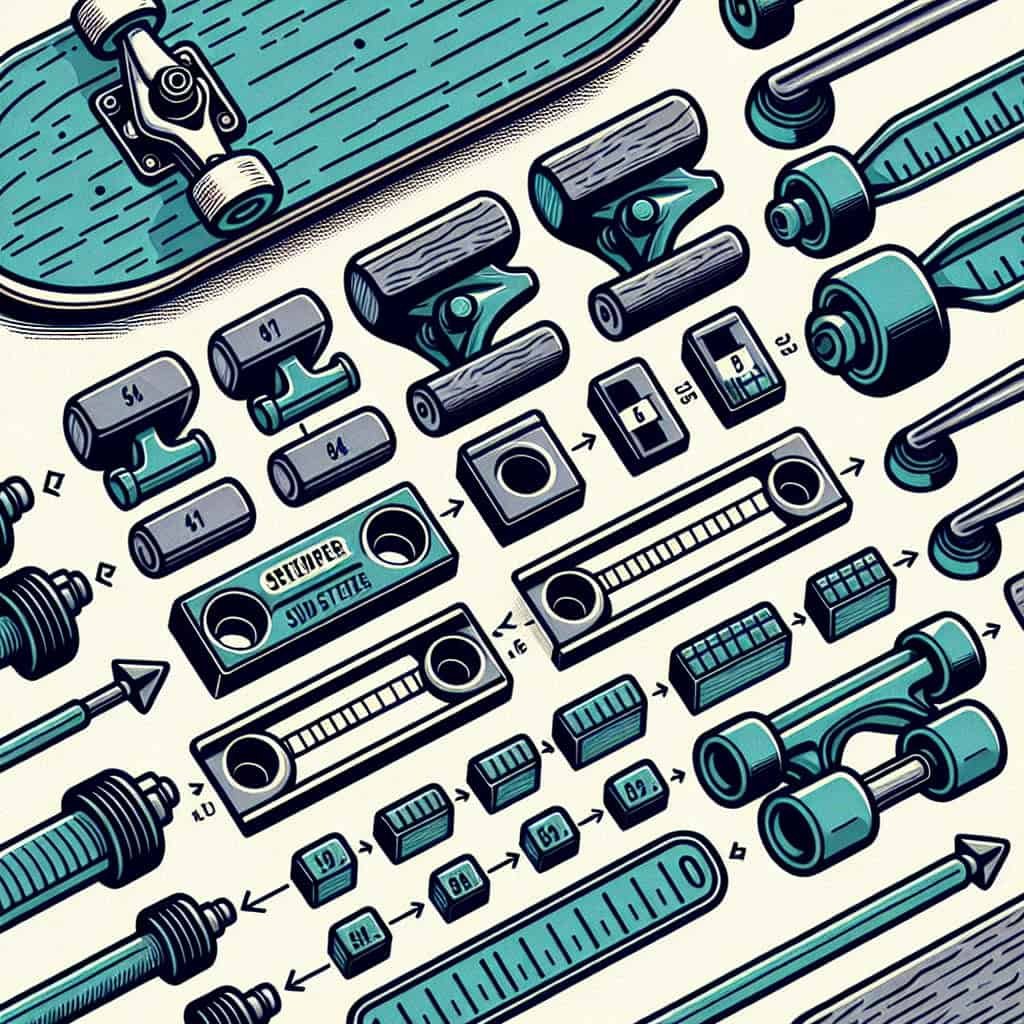Skateboarding is all about finding the perfect setup that suits your style and preferences. One crucial component that often gets overlooked but plays a significant role in enhancing your skateboarding experience is the skateboard riser pad. But how exactly do you find riser pads with the right height for your setup? In this article, we’ll explore the importance of riser pads and provide you with some useful tips on selecting the perfect ones to elevate your skateboarding game. So, get ready to discover how to achieve the perfect height and take your skateboarding to new heights! Skateboarding is an exhilarating sport that requires attention to detail when it comes to your setup. One often overlooked component is the riser pad, which can greatly impact your performance and comfort on the board. With a wide range of options available, finding the right riser pad height for your specific setup can make all the difference in your skateboarding experience. In this article, we will explore the factors to consider and provide some expert recommendations to help you find the perfect riser pad height.
Factors to Consider
When it comes to choosing the right riser pad height, there are several factors you need to consider. These include the size of your skateboard deck, the height of your trucks, and the type of terrain and riding style you prefer. Let’s take a closer look at each of these factors and how they can influence your choice of riser pad height.
Skateboard Deck Size
The size of your skateboard deck is an important factor to consider when choosing the right riser pad height. A larger deck may require a higher riser pad to achieve the desired level of clearance between the wheels and the deck. On the other hand, a smaller deck may not require as much height, as the wheels will naturally be closer to the deck surface. It’s important to take into account your deck size when selecting the appropriate riser pad height.
Truck Height
The height of your trucks also plays a role in determining the ideal riser pad height. Trucks come in different heights, ranging from low to high. If you have low trucks, you may need a lower riser pad height to maintain a balanced setup. Conversely, if you have high trucks, a higher riser pad height may be necessary to achieve the desired clearance. Understanding the height of your trucks is crucial in finding the right riser pad height.
Terrain and Riding Style
The type of terrain you skate on, as well as your personal riding style, can also influence your choice of riser pad height. If you primarily skate on rough terrain or enjoy doing tricks that involve a lot of impact, you may benefit from a higher riser pad height. This can provide increased shock absorption and help prevent wheel bite. On the other hand, if you skate mostly on smooth surfaces or prefer a lower profile setup for more stability, a lower riser pad height may be more suitable. Consider your terrain and riding style when deciding on the ideal riser pad height.
Understanding Riser Pad Height
Now that we have covered the factors to consider, let’s delve into the topic of riser pad height in more detail. Understanding what riser pads are and how different heights can affect your skateboard setup will help you make an informed decision.
What are Riser Pads?
Riser pads are small, wedge-shaped inserts that are placed between the skateboard deck and the trucks. They provide extra height and cushioning, which can enhance performance and comfort while riding. Riser pads are typically made of hard plastic or rubber and come in various heights to accommodate different setups.
Effects of Different Heights
The height of your riser pads can have several effects on your skateboard setup. Higher riser pad heights can increase the distance between the wheels and the deck, providing more clearance and reducing the risk of wheel bite. They can also offer enhanced shock absorption, which can be beneficial when skating on rough terrain or performing tricks that involve a lot of impact. On the other hand, lower riser pad heights can provide a more stable and responsive ride, making them popular among riders who prioritize control and maneuverability. It’s important to consider the effects of different riser pad heights and how they align with your skateboarding style and preferences.

Determining Your Ideal Riser Pad Height
Now that you have a better understanding of riser pads and their impact on your skateboard setup, let’s explore how to determine your ideal riser pad height. While personal preference ultimately plays a significant role, there are a few methods you can use to find the right height for your specific setup.
Start with Standard Height
If you are unsure where to begin, it’s recommended to start with a standard riser pad height. Standard risers typically range from 1/8 inch to 1/4 inch in height and are suitable for most setups. By starting with this baseline height, you can gauge how it feels and make adjustments from there.
Experiment with Different Heights
To fine-tune your setup, it’s essential to experiment with different riser pad heights. This can be done by incrementally increasing or decreasing the height of your riser pads and assessing how it affects your ride. Pay attention to factors such as comfort, stability, and wheel clearance. This trial and error process will help you find the perfect riser pad height that suits your individual needs.
Consider Personal Preference
While there are guidelines to consider, personal preference is ultimately the key factor in determining your ideal riser pad height. Some riders may prefer a higher riser pad for increased shock absorption and wheel clearance, while others may opt for a lower riser pad for a more responsive and stable ride. Take the time to experiment and listen to your body to find the riser pad height that feels most comfortable and supportive for your skateboarding style.
Methods for Measuring Riser Pad Height
To accurately measure the height of your riser pads, there are a few methods you can use. These include using a tape measure, comparing to existing pads, and consulting the manufacturer’s specifications.
Using a Tape Measure
One simple way to measure your riser pad height is by using a tape measure. Place the tape measure on a flat surface and rest the skateboard on top, ensuring the trucks are evenly positioned. Measure the distance from the surface to the bottom of the deck to determine the current riser pad height.
Comparing to Existing Pads
If you already have riser pads installed on your skateboard, you can compare the height of new pads to the existing ones. This can be done by placing the new pads alongside the old ones and visually assessing the difference in height. This method can help you maintain consistency or make incremental adjustments based on your current setup.
Consulting Manufacturer’s Specifications
Lastly, you can consult the manufacturer’s specifications to determine the height of your riser pads. Many manufacturers provide detailed information about their products, including the exact height of each riser pad. By referring to these specifications, you can ensure accuracy when selecting and measuring riser pad height.
Selecting the Right Riser Pad Height
Now that you have a solid understanding of the factors to consider and methods for determining riser pad height, let’s explore the different height options available and their corresponding benefits.
Low Riser Pads (1/8 inch – 1/4 inch)
Low riser pads, ranging from 1/8 inch to 1/4 inch in height, provide a minimal amount of lift to your skateboard setup. They are ideal for riders who prioritize a low profile and responsive ride. Low riser pads offer enhanced stability and control, making them popular among street skaters and downhill riders. They are also suitable for riders who prefer a skateboard setup with minimal wheel clearance.
Medium Riser Pads (1/2 inch – 1 inch)
Medium riser pads, ranging from 1/2 inch to 1 inch in height, offer a balanced amount of lift and cushioning. They are versatile and suitable for a wide range of setups and riding styles. Medium riser pads provide a good compromise between stability and maneuverability, making them a popular choice among skaters who want a balanced setup that can handle a variety of terrain.
High Riser Pads (1 1/4 inch – 2 inch)
High riser pads, ranging from 1 1/4 inch to 2 inches in height, provide the most lift and shock absorption. They are particularly beneficial for riders who skate on rough terrain or enjoy performing tricks that involve a lot of impact. High riser pads offer maximum wheel clearance, reducing the risk of wheel bite. While they may sacrifice some responsiveness and maneuverability, they provide optimal comfort and support for riders who prioritize shock absorption and clearance.
Comfort and Performance Factors
When considering riser pad height, it’s important to be aware of the comfort and performance factors that come into play. The choice of riser pad height can significantly impact shock absorption, wheel bite prevention, stability, and turning ability.
Shock Absorption
One of the key benefits of riser pads is their ability to absorb shock. The height of your riser pads can determine how well they absorb impact from jumps, landings, and rough terrain. Higher riser pad heights offer increased shock absorption, minimizing the impact on your legs and joints. This can be particularly beneficial for riders who skate on rough terrain or engage in high-impact tricks.
Wheel Bite Prevention
Wheel bite occurs when the wheels come into contact with the skateboard deck, causing the board to abruptly stop or throw the rider off balance. The height of your riser pads plays a crucial role in preventing wheel bite. Higher riser pad heights provide more clearance between the wheels and the deck, reducing the risk of wheel bite. This is especially important for riders who use larger wheels or have a more aggressive style of skateboarding.
Stability and Turning
Another factor to consider is the effect of riser pad height on stability and turning. Lower riser pad heights offer more stability and control, allowing for precise turns and maneuverability. This can be advantageous for riders who prefer a more stable setup, such as downhill skaters. On the other hand, higher riser pad heights may sacrifice some stability for increased shock absorption and wheel clearance. This can provide a more forgiving ride, particularly on rough terrain or during high-impact maneuvers.

Riser Pad Materials and Quality
In addition to considering the height, it’s important to pay attention to the materials and quality of your riser pads. The choice of material can affect hardness, durability, and vibration damping.
Hardness and Durability
Riser pads are typically made of hard plastic or rubber. The hardness of the material can influence the overall performance and durability of the pads. Hard plastic riser pads offer excellent durability and stability, making them a popular choice among riders who prioritize responsiveness and control. Meanwhile, rubber riser pads provide better shock absorption and vibration damping, enhancing overall comfort during rides.
Vibration Damping
Skateboarding can be harsh on your feet and joints due to the impact and vibrations generated while riding. Riser pads with good vibration damping properties can help reduce the strain on your body. Rubber riser pads are known for their superior vibration damping capabilities, providing a more comfortable ride by absorbing shocks and vibrations.
Brand and Customer Reviews
When selecting riser pads, it’s important to consider the brand and read customer reviews. Reputable brands often have higher-quality products that are tested and trusted by the skateboarding community. Customer reviews provide valuable insights into the performance, durability, and overall satisfaction of the riser pads. Taking the time to research and read reviews can ensure you make an informed decision and select high-quality riser pads for your skateboard setup.
Budget Considerations
While finding the right riser pad height for your setup is crucial, it’s also important to consider your budget. Riser pad prices can vary depending on factors such as brand, material, and quality. When setting a budget, it’s helpful to consider the longevity of the riser pads and potential replacement costs.
Price Range
Riser pad prices typically range from a few dollars to around $20 per set. Higher-quality riser pads made from durable materials tend to be more expensive. However, they often offer better performance, reliability, and longevity. Consider your budget and invest in quality riser pads that will withstand the demands of your skateboarding adventures.
Longevity and Replacement Costs
The durability and longevity of riser pads can vary depending on the materials used and the quality of construction. Cheaper, lower-quality riser pads may wear out more quickly and require more frequent replacements. This can end up costing you more in the long run. Investing in durable and long-lasting riser pads may have a higher upfront cost but can save you money on replacements over time. Consider the longevity of your riser pads and weigh it against potential replacement costs when making your decision.

Expert Recommendations
To provide you with additional guidance, let’s explore some expert recommendations on riser pad height. These recommendations come from professional skaters and industry experts who have extensive experience and knowledge in the skateboarding world.
Pro Skater Suggestions
Professional skateboarders often have specific preferences when it comes to riser pad height. Some pro skaters prefer a lower riser pad for a more responsive and stable ride, while others opt for a higher riser pad for increased shock absorption and clearance. It’s worth noting that each rider has their own unique style and preferences, so it’s important to experiment and find the height that works best for you. Ultimately, the goal is to find a riser pad height that enhances your skateboarding experience and allows you to perform at your best.
Industry Expert Opinions
Industry experts frequently share their insights and recommendations on finding the right riser pad height. They emphasize the importance of understanding and balancing the various factors involved, such as deck size, truck height, and riding style. Experts often recommend starting with a standard riser pad height and adjusting from there based on personal preference and performance. They also stress the importance of investing in high-quality riser pads for durability and performance, as lower-quality options may not provide the same level of comfort and longevity.
Conclusion
Selecting the right riser pad height for your skateboard setup is a highly personalized process. It involves considering factors such as deck size, truck height, terrain, and riding style. By understanding the effects of different riser pad heights and experimenting with various options, you can fine-tune your setup to optimize comfort and performance. Choosing high-quality riser pads made from durable materials ensures long-lasting support and vibration damping. While budget considerations are important, investing in quality riser pads can provide a superior skateboarding experience in the long run. With the guidance of expert recommendations, you can confidently find the perfect riser pad height that enhances your skateboarding adventures. So go ahead, explore the options, and elevate your ride with the right riser pad height for your setup. Happy skateboarding!


